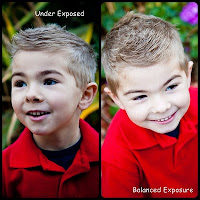 I asked Ellen Miller of Isobreathing to give us the scoop on how food and drinks we consider healthy can be deceiving.
I asked Ellen Miller of Isobreathing to give us the scoop on how food and drinks we consider healthy can be deceiving.Read your labels!
The new year is upon us and many of us make our yearly resolutions to become healthier and lose weight. I was asked to write this article as an eye opener for many. Yes we have been told to read our labels but how many of you are actually doing this. While there are many components to reading labels I am going to focus on sugar for this article. I hope that the references below will help you be more aware before you purchase foods especially if you are feeding young children.
When reading labels do you know what ingredients are actually sugar?
Look for: malt, sorghum, sucrose, fructose, maltose, glucose, dextrose, high fructose corn syrup, maple, brown sugar, powered sugar, brown rice syrup, cane juice.
or sugar alcohols: mannitol, sorbitol, xylitol

Look there's sugar in my yogurt: A great article on how much sugar is in yogurt. We typically think of yogurt as a healthy option. The photo above shows 8 teaspoons!
Remember every 4 grams is equal to 1 teaspoon.
More Sugar Shockers:
Apple cider 81 grams (20 teaspoons),
Instant coffee with sugar cappuccino flavored 64 grams (16 teaspoons),
Fruit punch powdered mix 95 grams ( 23 teaspoons)
Sweet tea 95 grams,
Grape juice frozen concentrate sweetened 36 grams
Salad dressing for coleslaw reduced fat 38.4 grams
Canned fruit 77 grams
Dried cranberries sweetened 62.6 grams,
Carmel popcorn 64 grams,
Banana chips 25.7 grams
Granola bars oats fruits and nut 40 grams
SoBe Energy or Elixir: 16 ounces = 52-54 grams sugar, 200-220 calories
SoBe Green Tea: 16 ounces = 50 grams sugar, 200 calories
Snapple Iced Tea, Peach, Lemon, or Raspberry: 16 ounces = 46-50 grams sugar, 200 calories
Arizona Iced Tea: 16 ounces = 48 grams sugar, 180 calories
Snapple Antioxidant Water, Agave Melon: 20 ounce bottle = 32 grams sugar, 140 calories
Glaceau Vitamin Water: 20 ounce bottle = 32 grams sugar, 125 calories
Gatorade Bring It, Shine On, or Be Tough: 16 ounces = 28 grams sugar, 100 calories
Instant Cocoa: You’d probably expect hot cocoa mix to have cocoa, or maybe powdered milk, highest on its list of ingredients. But for Swiss Miss Mocha Cappuccino and Marshmallow flavors, the first and second ingredients are sugar and corn syrup, with cocoa listed as the fourth ingredient.
Swiss Miss Mocha Cappuccino or Marshmallow flavors: 1 envelope made with 6 ounces water = 19 grams sugar, 120 calories
What can you do?
Read your labels, keep an eye out for the sneaky sugars and choose products without added sugar.
Make your own, to enjoy yogurt without the added sugar, make your own flavored yogurt starting with Greek Yogurt (it has 4.5g sugar per half cup and it is not from added sugars, but the sugar found naturally in the milk) and add in fruit.
Drink more Water, Hydration is very important in overall health and wellness add in a slice of lemon or lime to give your water flavor and save yourself the calories of the drinks listed above.














